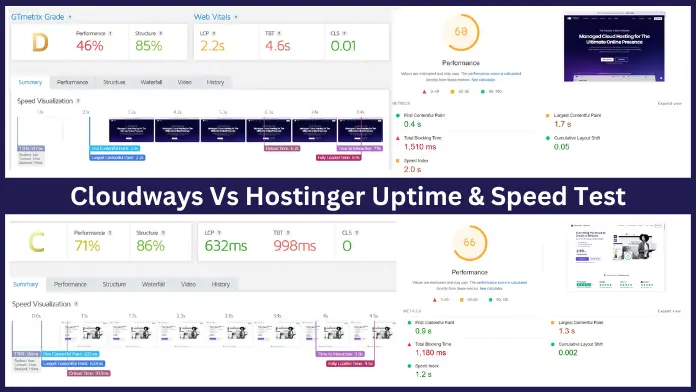
Introduction:
What is Keyword Clustering? This is a widespread question in the present time because with time search engines are getting updated and users’ ways of searching are changing. First of all, let us talk about keyword clustering. Keyword clustering is an effective SEO strategy that helps improve search engine rankings and provide a better experience to users.
Keyword clustering helps websites rank in a wide range of relevant search terms. By organizing any related keywords into clusters, any SEO specialist can optimize content addressing many different topics, greatly improving the website’s visibility, relevance, and authority. Here in this article, we will learn what keyword clustering is how it can benefit SEO, and how you can use it to enhance your SEO strategy and practice how it can be implemented.
Today, search engines like Google focus more on understanding content topics and user intent rather than understanding individual keywords. This is very important for SEO specialists to understand keyword clustering. Keyword clustering is the process of grouping similar or semantically related keywords into a cluster. Each cluster represents a topic that contains several keywords. This ensures that all searches related to the searched topic reach the user. It allows targeting a series of related keywords rather than targeting a single keyword. This helps your content rank for more searches and can answer more questions according to the user’s needs. This is extremely important in the SEO scenario.
Why is Keyword Clustering Important for SEO?
1. Enhanced Content Relevance and Quality
By grouping all keywords with similar intent, you can create content that is highly comprehensive and relevant to all user searches. This can create great content that satisfies all user searches and also improves your website’s time spent on the page bounce rate and engagement metrics.
2. Increased Visibility and SERP Dominance
Clustering allows you to rank for multiple related keywords with a single piece of content. This increases the likelihood of appearing in various search results, broadening your SERP (Search Engine Results Page) visibility. For example, a page optimized around a keyword cluster for “SEO best practices” might also rank for “SEO techniques” and “best SEO tips.”
3. Better Targeting of Search Intent
Keyword clustering can be a great help in increasing the ranking of your website because in today’s time search engines like Google are focusing more on understanding the intent behind searches. Through clustering, you can cover many points on the same topic. This shows the search result keeping in mind the different needs of the users. Your content may be able to answer different questions.
4. Efficiency and Scalability in Content Creation
Keyword clustering is a process that enables you to plan content more efficiently by organizing keywords related to a topic. You can target many keywords on a single page instead of creating separate pages for each keyword. This will save you time and you will not have to repeat any content and will also help you a lot in SEO.
How Does Keyword Clustering Work in SEO?
Keyword clustering involves a multi-step process that begins with gathering keywords and ends with content creation. Below is a step-by-step guide on how to implement keyword clustering.
Step 1: Conducting Keyword Research
To create any clustering, first, you need to have a list of keywords related to your topic, for which you can use tools like SEMrush, Ahrefs, and Google Keyword Planner. Collect a set of all keywords covering whatever your topic is and also include long tail keywords. The most important thing is that there is very little competition in long tail keywords.
Step 2: Identifying Semantic Relationships
Now that you have collected a list of keywords, the next step is to group keywords that have a similar meaning or intent or are relevant. For example, “SEO techniques,” “SEO best practices,” and “SEO strategies” are all about a common topic and can be grouped into a cluster. In this step, you are figuring out what should appear in search results based on users’ similar queries or needs.
Step 3: Grouping Keywords into Clusters
Once you’ve found meaningfully related keywords for your topic, proceed to group them into clusters. Each cluster has a main keyword that groups the rest of the supporting keywords. All supporting keywords revolve around this keyword. This is where the foundation of your content is laid.
For instance:
- Head keyword: “SEO techniques”
- Supporting keywords: “SEO strategies,” “SEO best practices,” “how to improve SEO”
Step 4: Content Creation Based on Keyword Clusters
For example, if you have a cluster around “SEO techniques,” your content might include sections that address:
- An overview of SEO techniques
- Best practices for SEO in 2024
- How to implement advanced SEO strategies
This way, you cover multiple queries in a single piece of content, increasing your chances of ranking for all keywords in that cluster.
Keyword Clustering Techniques and Tools
There are several ways to approach keyword clustering, from manual methods to using advanced tools and automation. Here are the key techniques:
1. Manual Keyword Clustering
Manual clustering involves looking at and collecting a list of keywords yourself and then grouping related keywords based on your understanding of their relationships. While this approach can be effective for small projects or specific topics, it is time-consuming and difficult to scale as your keyword list grows.
2. Automated Keyword Clustering Using SEO Tools
There are many tools available for keyword clustering like SEMrush, Ahrefs, and SurferSEO using which we can do automated keyword clustering. These tools study the search engine results and automatically group keywords based on that. These tools use special types of algorithms to understand SERPs and find out which keywords are commonly ranked together. After complete analysis, they create keyword clusters that you can use to make your content more searchable and see your website in better rankings.
3. Semantic Keyword Clustering
In general keyword clustering takes into account not just the literal meaning of words, but the intent and context behind them. Natural language processing (NLP)-powered tools help with this type of clustering, recognizing nuances in search queries and grouping keywords based on user intent.
For example, “how to rank in Google” and “improve Google rankings” may seem different at first glance, but both have the same purpose. A semantic clustering tool will group these, allowing you to optimize for user searches more effectively.
Best Practices for Keyword Clustering in SEO
Below are some best practices to make the most of keyword clustering:
1. Focus on User Intent
One special thing to note while grouping keywords is to always prioritize user intent. Search engines always deliver content that most accurately answers user queries. Your clusters should reflect what users are looking for, not just the words they are typing in the search engine.
2. Create Comprehensive, Valuable Content
When creating content with keyword clusters, make sure the content is comprehensive and provides value Cover different aspects of the topic on a single page Include different search queries in your clusters this increases your chances of ranking for multiple keywords and provides a better user experience.
3. Update Clusters Regularly
SEO is constantly evolving, and so is user behavior. Make sure to revisit your keyword clusters periodically and update them based on new trends, search data, or changes in user intent. This will help you maintain relevance and stay ahead of your competitors.
Examples of Keyword Clustering for SEO
To illustrate how keyword clustering works, let’s look at some examples:
Example 1: SEO for Small Businesses
- Keywords: SEO for small business
- SEO strategies for small businesses
- Local SEO for small business
- SEO tips for small business owners
Example 2: On-Page SEO Techniques
- Keywords: On-page SEO
- Best on-page SEO techniques
- How to optimize on-page SEO
- On-page SEO strategies
Conclusion: The Power of Keyword Clustering for SEO
Keyword clustering is an effective strategy to improve your SEO results by targeting multiple related keywords with a single piece of content. The more and better the clusters you use, the more rich and comprehensive the content you can provide and better understand and address user intent and search terms. It is up to you whether you create clusters manually or use the best tools like SEMrush, Ahrefs, etc. By using clustering in the SEO strategy, you can get more traffic to your website and also increase your rankings
Final Thoughts:
Ready to improve your SEO with keyword clustering? Group related keywords around any topic and use them to create rich, valuable content and watch your rankings soar across multiple search terms.


